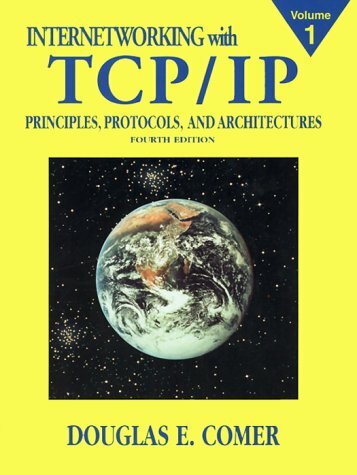|
From CertCities.com
|
|||||||||||||||||||||||||||||||||||||||||||||||||||||||||||||||||||||||||||||||||||||||||||||||||||||
|
Review Buy This Book! by Greg Neilson 9/26/2001 --
The subtitle of the book is "Principles, Protocols, and Architectures," and that pretty well describes what you will find here. TCP/IP has become the lingua franca of networking, so if you have any involvement with networking you will need to be conversant with TCP/IP. It is intended as both a technical reference and as an advanced level college textbook, so the book is serious in tone yet very clear and precise. The author has been involved with Internet-related research since the late '70s and is renowned as an expert on TCP/IP and the Internet. The new edition updates a number of chapters with the latest developments in areas such as IPv6 and IPSec. It also includes four new chapters covering mobile IP, VPNs and NAT, HTML and HTTP, and voice and video over IP. The last edition was published in 1995, so there has been a great deal of RFC activity since then that needed to be added. Many of these newer technologies are also new features of Windows 2000. That makes this book a useful tutorial on the concepts involved before you delve deeper into Microsoftís implementation when studying for your exams. The book starts with a brief discussion of the underlying network technologies (Ethernet, FDDI and ATM), and then works its way up the TCP/IP protocol stack. Each main protocol, including IP, ICMP, UDP, TCP, Rlogin/Telnet and others, is covered in its own chapter. There is also plenty of discussion of routing concepts, with 4 chapters covering the design of routing protocols such as BGP, RIP, OSPF and Hello. To give an idea of the depth of coverage in the book, the DNS chapter includes a discussion of the hierarchical namespace, Internet domain naming, caching and how names are resolved to IP addresses. It then discusses the message formats from a DNS server, abbreviations of domain names, inverse mapping and the different types of resource records in DNS. In short, I canít recommend this book highly enough. It deserves a place on your professional reference bookshelf. Have you read this book? Let us know what you think! Rate it below or enter our Forums. † Greg Neilson, MCSE+Internet, MCNE, PCLP, is a Contributing Editor for Microsoft Certified Professional Magazine and a manager at a large IT services firm in Australia. He's the author of Lotus Domino Administration in a Nutshell (O'Reilly and Associates, ISBN 1-56592-717-6). You can reach him at Attn: Greg. |
|||||||||||||||||||||||||||||||||||||||||||||||||||||||||||||||||||||||||||||||||||||||||||||||||||||
|
top Copyright 2000-2009, 101communications LLC. See our Privacy Policy. For more information, e-mail . |
|||||||||||||||||||||||||||||||||||||||||||||||||||||||||||||||||||||||||||||||||||||||||||||||||||||
